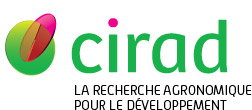Doumenge Charles.
2022. Discussion on potential OECMs in Central Africa.
. IUCN
|
Version publiée
- Anglais
Utilisation soumise à autorisation de l'auteur ou du Cirad. 611727.pdf Télécharger (132kB) | Prévisualisation |
|
|
Version publiée
- Anglais
Accès réservé aux personnels Cirad Utilisation soumise à autorisation de l'auteur ou du Cirad. Présentation_ST1-Panel3_ChD.pdf Télécharger (541kB) | Demander une copie |
Matériel d'accompagnement : 1 diaporama (8 vues)
Résumé : The identification of potentials OECMs is a question which becomes central to the development of new conservation strategies adapted to local contexts, including legislation, national policies, governance and management systems, stakeholders' expectations, etc. In countries like Gabon, timber concessions and protected areas cover most of the territory. Only very few lands could remain for potential OECMs. Apart from conservation series in the concessions, a first opportunity could be to integrate wildlife or non-timber forest products management zones within timber concessions' management plans and to open timber concessions to co-governance agreements between concessionaires and local populations. If co-management is not possible, other options could include diminishing the areas covered by timber concessions by extracting wildlife management zones or community forests. In Democratic Republic of the Congo, there are more opportunities for potential OECMs as industrial concessions and protected areas do not cover the whole territory. Forest concessions for local communities (known as CFCL) can be settled for the benefit of local communities and can accommodate conservation objectives. Other management systems such as Conservation concessions could also be considered as OECMs, albeit they are firstly settled for carbon credits. In conclusion, opportunities for potential OECMs is country specific. At the moment, only territories that have already a legal status can be considered as potential OECMs, which limits opportunities. Consideration of an OECM label for a specific territory is linked to an interest of the stakeholders to be identified (recognition, financial support…). Also, all the process of evaluation and labelling needs human capacities and money: who is going to pay? This is still a question to be answered.
Auteurs et affiliations
- Doumenge Charles, CIRAD-ES-UPR Forêts et sociétés (FRA)
Source : Cirad-Agritrop (https://agritrop.cirad.fr/611727/)
[ Page générée et mise en cache le 2025-09-28 ]




